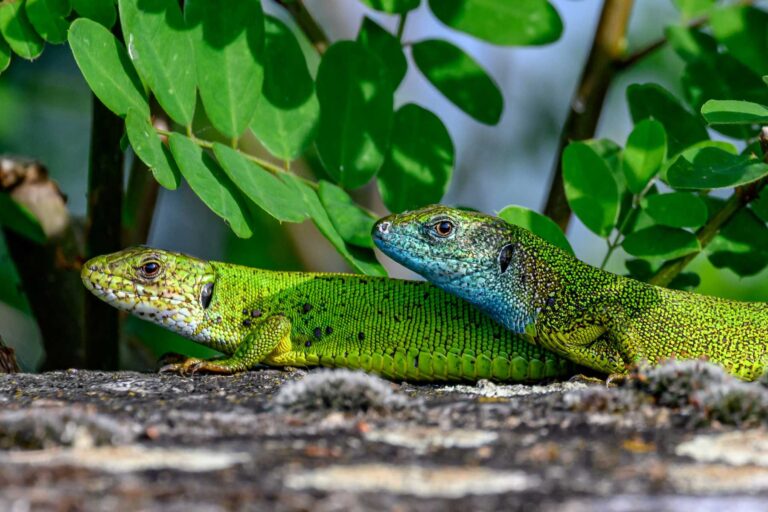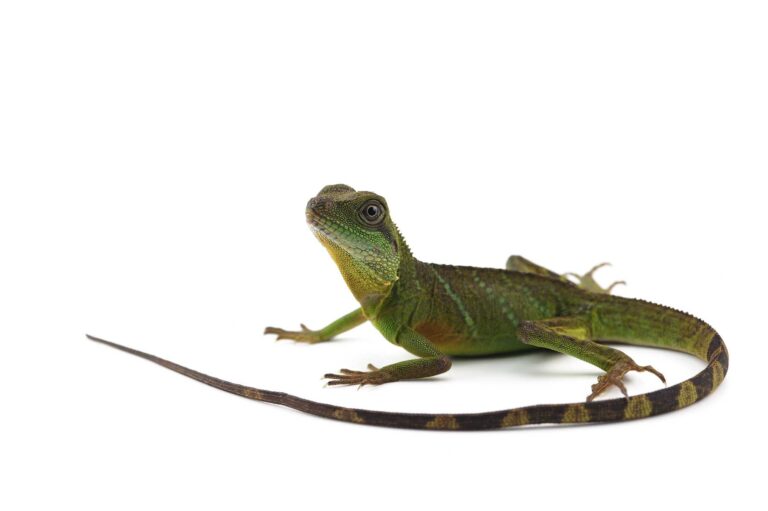The Predators of Iguanas: Unveiling the Enigmatic World of Reptilian Pursuit
Nestled in the vibrant landscapes where sun-drenched territories extend as far as the eye can see, iguanas hold court as the guardians of the reptilian realm. Yet, in the intricate choreography of the natural world, iguanas face formidable adversaries. This exploration takes us on a journey through the fascinating and often dangerous world of iguana predators, where the hunters emerge from the shadows and the hunted must navigate a web of dangers.
Predators of Iguanas
| Predator | Description |
| Birds of Prey | Raptors with keen eyes and lethal talons |
| Carnivorous Mammals | Stealthy hunters equipped with razor-sharp claws |
| Snakes | Sinuous serpents, masters of stealth and precision |
| Crocodiles and Alligators | Ambush predators with powerful jaws |
| Large Lizards | Agile reptilian hunters with voracious appetites |
| Invasive Species | Non-native disruptors with a penchant for iguana flesh |
| Human Predation | Historical and contemporary impacts on iguana populations |
Birds of Prey: Masters of the Skies
In the vast expanse of the sky, a diverse array of raptors casts a watchful eye on the landscapes below. Species such as the Red-tailed Hawk, Crested Caracara, and Osprey are among the adept hunters who consider iguanas a delectable prey item. These birds, equipped with keen eyesight and talons capable of tearing through scales, soar majestically, surveying the terrain for any sign of their scaly quarry.
The hunting techniques of birds of prey are as diverse as their species. While some, like the Red-tailed Hawk, rely on soaring high above and diving with incredible speed, others, such as the Crested Caracara, exhibit a more ground-based approach, stalking their prey with aerial and terrestrial prowess.
Carnivorous Mammals: Shadows in the Underbrush
Amidst the labyrinthine underbrush, a different set of predators emerges – the carnivorous mammals. Jaguars, ocelots, and foxes, with their acute senses and formidable physical prowess, silently navigate the forest floor. Equipped with retractable claws and teeth designed for tearing flesh, these stealthy hunters pose a significant threat to iguanas foraging below.
The interactions between carnivorous mammals and iguanas testify to the perpetual struggle for survival. Iguanas, ever watchful, must rely on their agility and quick reflexes to evade the clutches of their mammalian adversaries, creating a dynamic dance of predator and prey amidst the greenery.
Snakes: Masters of Stealth and Precision
In the intricate tapestry of vegetation and rocks, snakes, the silent hunters of the reptilian realm, await their opportunity. Boa constrictors, rattlesnakes, and other serpentine predators leverage their twisted bodies and venomous bites to capture and subdue their prey. The stealth and precision of snake predation exemplify the patient waiting game these predators play, coiled and ready to strike when an unsuspecting iguana ventures too close.
Snake Predators of Iguanas
| Snake Species | Habitat | Hunting Strategy |
| Boa Constrictor | Forests, Swamps | Ambush, Constriction |
| Rattlesnake | Deserts, Grasslands | Ambush, Venomous Bite |
| Green Anaconda | Rivers, Wetlands | Subaquatic Ambush, Constriction |
The diverse array of snake species preying on iguanas showcases the adaptability of these predators to various habitats and their specialized hunting strategies.
Crocodiles and Alligators: Watery Ambush Artists
Transitioning to the water’s edge, the formidable predators of the crocodilian order enter the scene. Crocodiles and alligators, with their armored hides and powerful jaws, master the art of aquatic ambush. Positioned along riverbanks or lurking in swampy shallows, these reptilian giants snatch unsuspecting iguanas with breathtaking speed, dragging them beneath the water’s surface to meet a watery fate.
Crocodilian Predators of Iguanas
| Crocodilian Species | Habitat | Hunting Strategy |
| American Alligator | Wetlands, Rivers | Ambush, Powerful Bite |
| Nile Crocodile | Rivers, Lakes | Ambush, Dragging Prey Underwater |
| Spectacled Caiman | Swamps, Marshes | Ambush, Swift Strikes |
Crocodilians’ diverse habitats and hunting strategies highlight their adaptability to different environments and their role as apex predators.
Large Lizards: Masters of Agility and Pursuit
Large lizards like monitor lizards and tegus reign supreme within the sun-drenched rocks and tangled thickets. These agile reptilian hunters, armed with sharp claws and voracious appetites, traverse the landscape for prey. While they may share habitats with iguanas, they also represent competition for resources, occasionally turning the tables to become predators themselves.
Large Lizard Predators of Iguanas
| Lizard Species | Habitat | Hunting Strategy |
| Nile Monitor | Swamps, Rivers | Pursuit, Sharp Claws |
| Argentine Black and White Tegu | Forests, Grasslands | Opportunistic Foraging, Ambush |
| Komodo Dragon | Islands, Grasslands | Ambush, Bacterial Venomous Bite |
The hunting strategies of large lizards vary, showcasing their adaptability to diverse environments and their effectiveness as predators.
Invasive Species: Uninvited Predators
As the human footprint extends across the globe, so does the impact of invasive species on local ecosystems. Feral cats and Burmese pythons, introduced to new habitats through human activities, disrupt the natural order of iguana habitats. These invaders, unaccustomed to the delicate balance of their new ecosystems, often target iguanas with relentless fervor, contributing to the challenges faced by native reptile populations.
Invasive Species as Iguana Predators
| Invasive Species | Introduced Habitat | Impact on Native Iguana Populations |
| Feral Cats | Various Environments | Direct Predation, Habitat Disturbance |
| Burmese Python | Wetlands, Forests | Predation, Competition for Resources |
| Common Myna | Urban, Forests | Nest Predation, Competition for Food |
Understanding the impact of invasive species on iguana populations is crucial for effective conservation efforts and habitat management.
Human Predation: A Historical and Contemporary Saga
Throughout history, humans have viewed iguanas as fascinating creatures and a source of sustenance. Indigenous cultures and modern communities alike have hunted iguanas for their meat and skins, profoundly shaping the dynamics of iguana populations. Today, as human populations expand and habitats dwindle, the impact of human predation on iguanas continues to loom large, underscoring the need for sustainable management practices.
Dietary Preferences: The Culinary Palette of Predators
The dietary preferences of iguana predators are as diverse as the ecosystems they inhabit. While some predators may favor iguanas as their primary prey, others may consume them opportunistically, supplementing their diets with other prey species.
Hunting Behavior: The Dance of Predator and Prey
The intricate dance of predator and prey unfolds in iguana habitats, revealing a tapestry of hunting behaviors and strategies. From stealthy stalking to lightning-fast strikes, each predator employs unique tactics honed by millennia of evolution and adaptation.
Adaptations of Iguanas: Strategies for Survival
Due to relentless predation pressure, iguanas have evolved various defense mechanisms to evade their predators. From lightning-fast sprinting to camouflage and burrowing, they employ tactics to outwit their adversaries and ensure their survival in the wild.
Impact on Iguana Populations: Navigating the Perils of Predation
The delicate balance between predator and prey profoundly shapes the dynamics of iguana populations. Predation pressure, habitat loss, and human encroachment pose significant challenges to the long-term viability of iguana populations.
Conservation Efforts: Safeguarding the Future of Iguanas
In the face of mounting threats, conservationists are working tirelessly to safeguard iguana populations and their habitats. From habitat restoration to captive breeding programs, a range of initiatives are underway to mitigate the impact of predation and human activities on iguanas. By fostering awareness and stewardship of the natural world, we can ensure a brighter future for these remarkable creatures and the ecosystems they call home.
Conclusion: The Everlasting Struggle for Survival
In the intricate tapestry of life, the predators of iguanas play a vital role in shaping the dynamics of ecosystems. From the skies to the depths of the earth, an array of creatures hunts, each contributing to the rich tapestry of life in iguana habitats. As we strive to unravel the mysteries of nature, let us not forget the intricate dance between predator and prey that defines the wild places of our world. In the eternal struggle for survival, may iguanas and their predators continue to thrive amidst the ever-changing landscapes of our planet.



